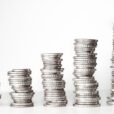
World’s largest brewer Anheuser-Busch InBev SA/NV (BUD – Free Report), also known as AB InBev, missed the earnings estimate of analysts polled by Zacks for the sixth straight quarter, when it posted second-quarter 2017 results. The company’s bottom-line also declined year over year. Moreover, revenues also missed the estimate after beating the same in the trailing two quarters. Lower-than-expected earnings performance in the past few quarters has hurt the stock in the past one year. AB InBev’s stock has declined 8.2%, wider than the industry’s marginal decline of 0.4%.
The lower-than-expected bottom-line result can largely be attributed to persistent weakness in Brazil and negative impact of mark-to-market adjustment. In fact, the company stated that Brazilian economy is recuperating at a slow rate. Nonetheless, management remains positive about Brazil’s performance in the long run, as it anticipates recovering revenues in the country, this year itself.

Q2 Highlights
Normalized earnings per share of 95 cents decreased 10.4% from $1.06 earned in the year-ago quarter and also lagged the Zacks Consensus Estimate of $1.14.
Revenues for the quarter advanced 31.2% to $14,182 million but missed the Zacks Consensus Estimate of $14,434 million. Further, the company registered organic revenue growth of 5.4% on the back of a 4.1% rise in revenues per hectoliter (hl) on a constant geographic basis. This improvement resulted from ongoing revenue management and premiumization in markets like Western Europe and China, along with robust performance by superior brands. Further, revenues per hl advanced 3.6% on a reported basis.
Moreover, consolidated revenues for the company’s three global brands, namely Budweiser, Corona and Stella Artois, increased 8.9% in the reported quarter. Global brands revenues for the quarter comprised 16.6% growth at Corona, a 6.6% rise in Stella Artois and a 5.7% upside at Budweiser.
Total volumes inched up 1%, including a 2.1% increase in the beer volumes. Gains from volume growth in South Africa, Mexico and Australia were offset by volume declines witnessed in Columbia, Brazil and the U.S.
Cost of sales escalated 28.9% year over year to $5,444 million, while organically the same increased 3.2%. Organic cost of sales per hl rose 1.3% due to negative foreign currency translations, partly compensated by synergies, efficiencies and procurement savings. On a constant geographic basis, cost of sales per hl increased 2.2%.
The company’s normalized earnings before interest, taxes, depreciation and amortization (EBITDA) surged 33.5% year over year to $5,354 million, while growing 11.8% on an organic basis – on the back of cost synergies and robust top-line growth. This was partially curbed by the increased cost of sales. EBITDA margin expanded 70 basis points (bps) to 37.8%, while organically, the same increased 238 bps.















